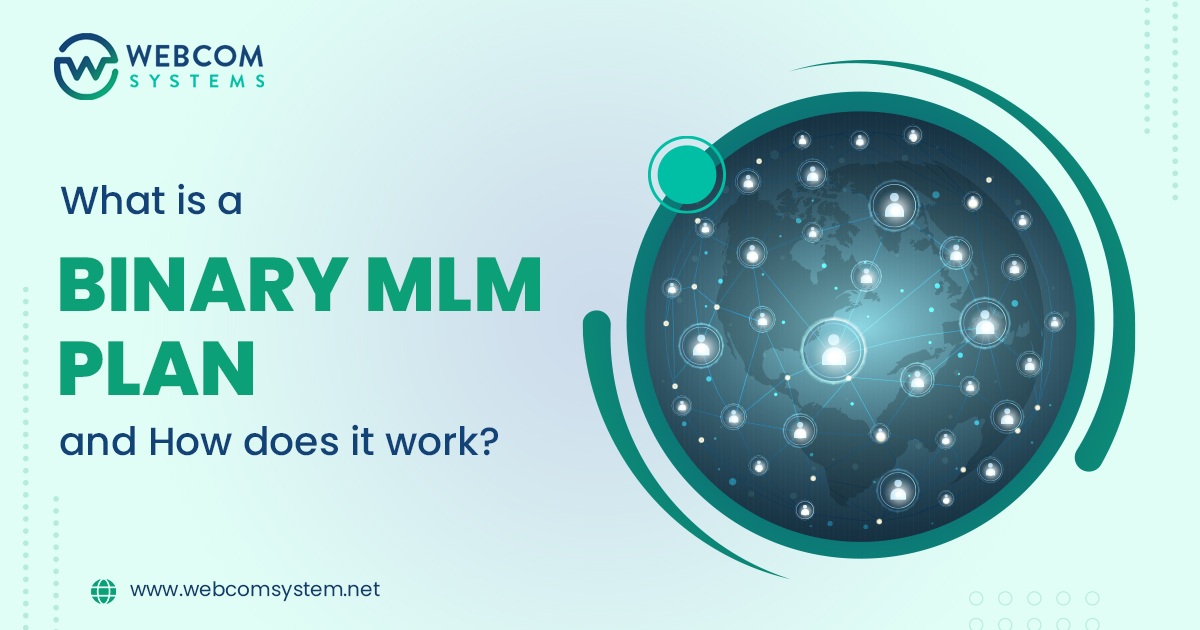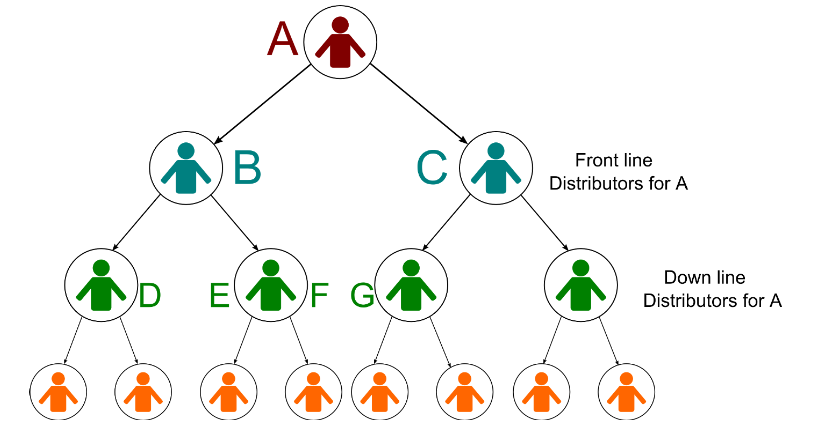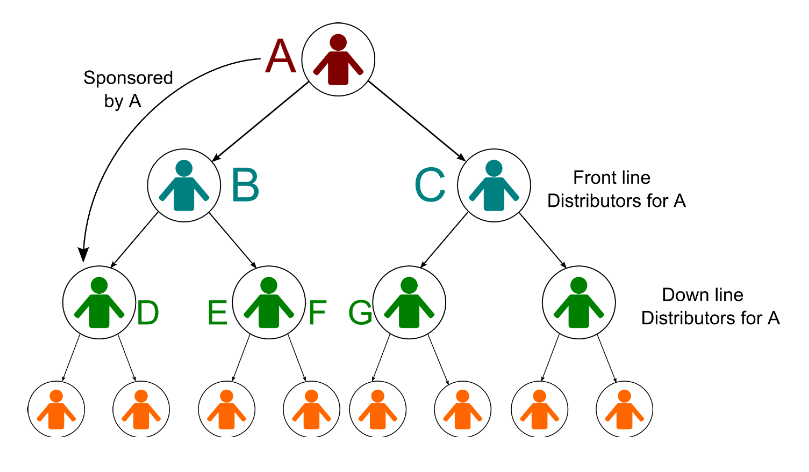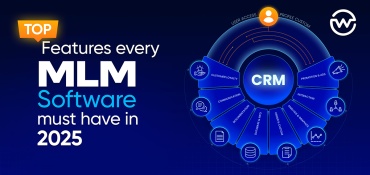Many Networking marketing firms apply Binary MLM as a unique business technique. Binary MLM, as the name implies, is centred on the number two. A binary MLM’s distribution strategy resembles a binary tree. A distributor would bring in two new members (Frontline distributors). These two new distributors would then engage two more distributors, and so forth.
A typical Binary MLM distribution strategy may look like this:
Distributor A for the MLM firm implementing the Binary plan would engage two Front Line Distributors, B, and C. The distributors B and C would then employ D, E, F, and G as A’s downline distributors. This procedure would be repeated, and additional distributors would be added. In theory, it might reach infinite as additional distributors join. This is a plan for a 2-by-infinity matrix.
They may not always finish up on the same level as the two persons they support. Someone above you may have had to place someone they sponsored in that position because their first two positions were already full, or because they continue to sponsor people as they develop their sales organization.
Spillover
Each distributor in a binary MLM strategy would have just two frontline distributors. Assume A employs three distributors, B, C, and D. B and C are his frontline distributors. Now that A has recruited D, he cannot be his frontline distributor because the first two slots have been occupied. He has the option of placing himself below B or C. As a distributor continues to hire (or support) additional distributors, they may not end up at the same level ( as front-line distributors). This is known as spillover.
It is also possible that both of your sponsors will not wind up being your front-line distributors since a distributor above you may have had to place the new distributor recruited in that position as he continues to employ new distributors to develop the sales network.
Binary MLM Plan Structure
The binary tree is divided into two subtrees, the first of which is known as the Power Leg, and the second as the ProfitLeg.
Power Leg
As new distributors sign up, they will be assigned to the distributor’s power leg. New distributors will be automatically placed in the power leg structure. Due to the restricted amount of front-line distributors, any new sponsors would be placed in the distributor’s downline power leg (Spillover).
Profit Leg
Spillover is not supported by Profit Leg. All distributors in the profit leg are employed (or supported) individually by their immediate distributor. As new distributors sign up, they will be assigned to the distributor’s power leg.
Advantages of Binary MLM Plan
The binary comp plan in network marketing provides the following benefits.
Endless depth: With a binary plan, distributors may add members to an unlimited number of tiers and make a big revenue.
Group work: Depending on whether the distributor prefers left or right leaking, the distributors become active as they must balance the tree for compensations.
Quick growth: The binary strategy provides the potential for rapid corporate expansion.
Carry forward: Unpaid sales volume (SV) from the current binary payout cycle is carried forward to the next binary payout cycle.
Spillover: New members are spilled over to the infinite downline levels after finishing the first level.
Future Binary MLM Plan Trends
The list of popular companies above is based on a study conducted by our research team. According to this study, MLM companies prefer binary income plans over other plans in order to increase business productivity and activity.
Following the analysis, there is an observable trend – “hybrid plan.” In their business model, many binary companies use a hybrid version of the other compensation plans.
The best combination is unique marketing strategies combined with the existing benefits of the binary plan. This marketing strategy may have established a trendline, and this trend will likely expand into new areas in the near future.
Recommended Read: What Should You Consider While Choosing an MLM Software?






